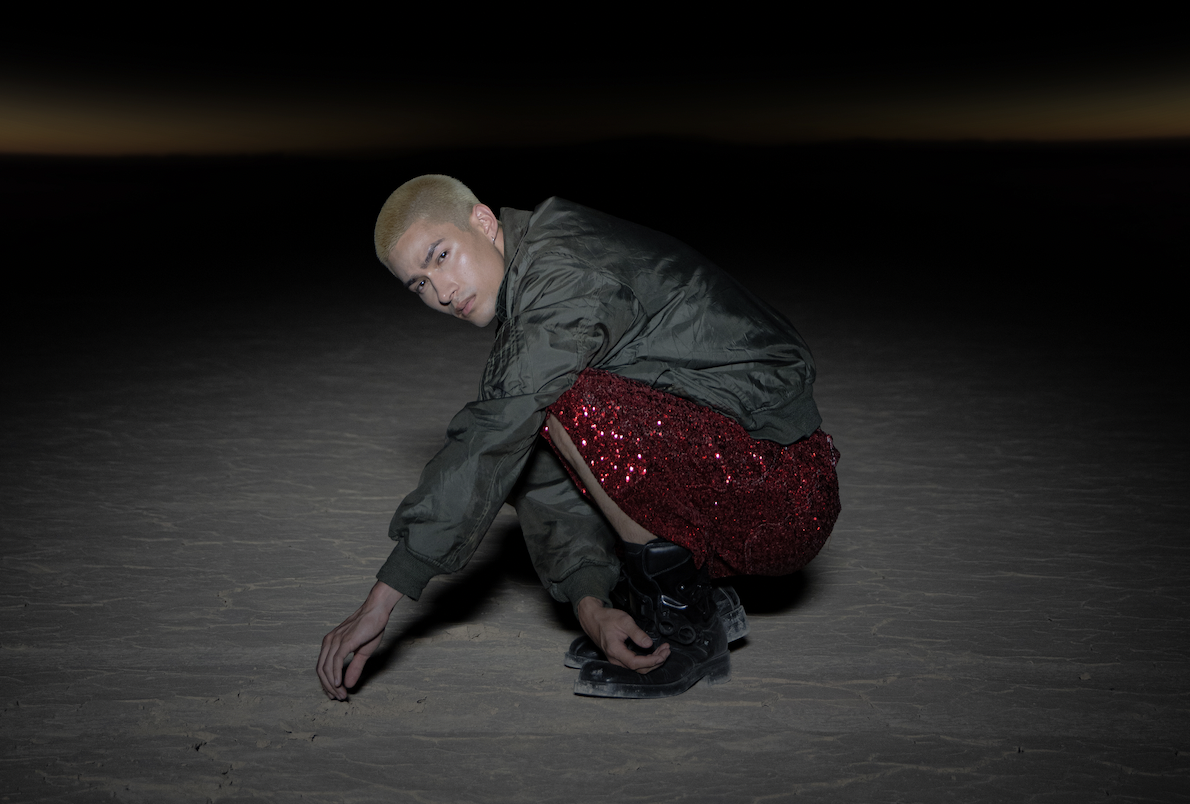When I got a text last week from a local friend asking if I’d seen the American Dream, I initially thought she was making a jab at the quickly collapsing state of my home country.
Turns out, American Dream Park is a real amusement park — or at least, it was. The park opened in 1996 and closed abruptly in 2001. The whole project seemed doomed from the start: it was too far from families and would-be guests, too expensive, and apparently just poorly managed in general. Also, there are no roller coasters of any kind, so it was just straight up lame as far as amusement parks go. Nonetheless, when I heard that it was slated for a long overdue and imminent demolition, I pulled my sick, aching body together and piled into a cab with two local guides and my fellow American friend Stewart.
When we arrived at the development compound that housed the empty park grounds, we were greeted by some sleepy security guards who were boiling instant ramen. They told us we had to buy park entry tickets, which, given that the park formally closed a decade and half ago, was a not-so-subtle request for a bribe. One of the guards held up his Alipay QR code to scan, and after transferring some money for nonexistent tickets, we wandered forward into the park.

These fuckin’ guys

The park entrance

The park is immediately eerie. The mind boggles at the number of Hollywood murder scenes one could film here. It’s such a strange juxtaposition between the scale of the project (enormous), and the totality with which it was abandoned. Rusty nails stick out of walls, signs collapse overhead, and stuffed animals intended as carnival prizes spill out of storage boxes, ready for anybody who wants them.
Rusty nails stick out of walls, signs collapse overhead, and stuffed animals intended as carnival prizes spill out of storage boxes
Climbing through windows of boarded up shacks we come face to face with the daily lives of the park’s staff. 16-year-old packets of herbal tea are strewn around on the floor next to floppy disks, pagers, and VHS cassettes.


As we walk further and further into the collapsing scene, I start to understand just how big this park was. We’re talking about a $50 million project, in 1990s China. At the time, the country was finally stepping into its swing, opening up to the world around it and developing at an unprecedented rate under president Jiang Zemin. It was eager to try new things, to go places it hadn’t before. And although the attitude yielded hugely significant successes that still resonate today, American Dream Park stands as a reminder of its failures. Now, under president Xi Jinping, the idea of an amusement park built around the theme of American goodness is completely inconceivable.
’90s China was eager to try new things, to go places it hadn’t before
Today, the park caters solely to alt-clientele like ourselves. We came across a handful of other vagrant, explorer youth, as well as photographers and a team of airsoft enthusiasts decked out in camo, hiding in the ruins and casually firing at each other throughout our visit (actually a really badass idea). Graffiti artists had come to make their mark, with most of the pieces we found belonging to the Black Square Art Collective.
At one point we came across a pile of empty hospital-grade painkillers in individual glass jars, evidence of some strange kind of recreational drug use. The most surprising thing overall was the complete sincerity of the abandonment. No cleaning crews had visited. Nobody had come to clear out the arcade machines, or the Skee-Ball ramps, or to remove the waterlogged paddle boats from the Louisiana section. We found a handful of fire extinguishers that were still loaded and in working condition, which we fired off with great delight (really hoping that wasn’t carcinogenic).
Nobody had come to clear out the arcade machines, or the Skee-Ball ramps, or to remove the waterlogged paddle boats from the Louisiana section
The $50 million park that was intended as a game-changer in Shanghai is now just a destination for curious urban explorers. It’s a stark symbol of the relentless, by-any-means-necessary attitude towards development in China; the pursuit of their own ‘American Dream’. As one hasty effort fails, it’s simply given up on and forgotten in order to focus on the next. That kind of mobility, in a lot of ways, actually constitutes a huge strength — a capability for growth unmatched by any other world power. But as China moves from an era of novelty amusement parks to one of QR codes, e-commerce, and international aspirations, sites like American Dream Park become harder to find. Enjoy some photos from our day at the park — American Dream, you will be missed.


































